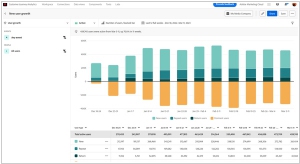Top 10: Product Analytics software
Updated: July 30, 2023
Product analytics software is a powerful tool that enables businesses to gain valuable insights into the performance and usage of their products and services. This specialized software collects and analyzes data from various sources, such as user interactions, website traffic, and customer behavior, to provide a comprehensive view of how customers engage with the product. With advanced reporting and visualization capabilities, product analytics software empowers companies to identify trends, user preferences, and areas for improvement. This data-driven approach allows businesses to make informed decisions, optimize product features, and enhance user experiences. Additionally, product analytics software often integrates with other tools, such as customer relationship management (CRM) systems and marketing platforms, enabling cross-functional analysis and alignment. By leveraging the power of product analytics, companies can stay ahead of market demands, enhance customer satisfaction, and drive continuous innovation to achieve their business goals.
Some of the most popular Product Analytics software options are listed below.
See also: Top 10 Marketing software
See also: Top 10 Marketing software
2023. Adobe brings product analytics to its Experience Cloud

Adobe has introduced a novel analytics solution named Adobe Product Analytics, intended for product teams. The service is designed to provide such teams access to crucial metrics related to product lifecycles that were traditionally compartmentalized within different teams within an organization and had to be obtained through data analysts. Adobe Product Analytics is built on the omnichannel Customer Journey Analytics (CJA) service, with product teams being the initial targeted users. However, Adobe plans to create solutions for other personas as well. With this solution, all CJA users now have a shared analytics language and framework. The service also features a guided analysis capability to assist product teams in posing the right questions to gain insights, such as identifying patterns in engagement over time or recognizing obstacles in transitioning users from app usage to higher engagement.

